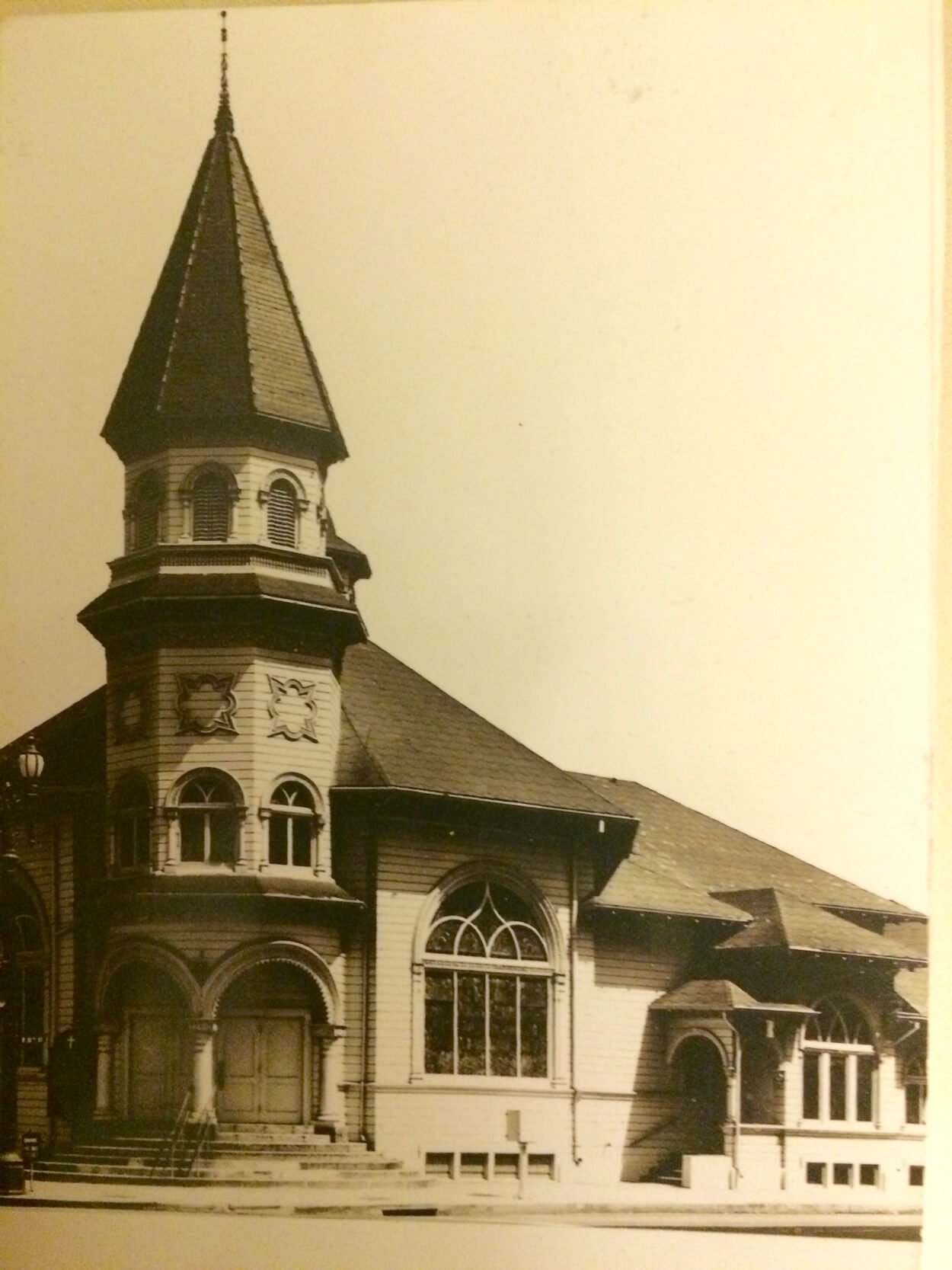Intersection
[Photo: First Evangelical Church of Los Angeles]
Building a spiritual vocabulary out of our experience of life in the city is an activity that requires both an immersion into urban life and a lively imagination. One characteristic feature of city life is the intersection, the coming together at a crossing of two streets. An early fascination with one particular intersection— the intersection of Twelfth and Hope streets in the City of Los Angeles—led me to borrow this word to describe how one can see a journey of faith in relation to life in a city. This imaginative intersection is one I have occupied for the entirety of my life, keeping one foot on each of these roads—the urban and the spiritual—as they arrive at a place of convergence.
The Intersection of Twelfth and Hope
The corner of Twelfth and Hope was the location of the First Evangelical Church of Los Angeles, a congregation that was part of a small American-born denomination established in the early part of the nineteenth century to serve the waves of immigrants arriving from Europe. Caught up in several mergers this little denomination has essentially disappeared from view.
My parents who were both raised in the Midwest eventually found themselves in Southern California where they met, fell in love, and married at the First Evangelical Church. Several years later, when I was born, this little church on the corner of Twelfth and Hope became the epicenter of my childhood.
Each Sunday morning we would drive from the hills above Pasadena into the heart of Los Angeles, past City Hall, to that church where they first met. Our route was the Arroyo Seco Parkway which followed the graceful course of a seasonal riverbed. It is one of the oldest freeways in the United States.
It was the destination that defined the drive. The church at the corner of Twelfth and Hope became the place where I discovered a nurturing community larger than my family and an initial introduction to a sacred story that opened up larger questions of meaning and purpose.
But even though the city skyline has changed with City Hall being now only the 39th tallest building in the city and the First Evangelical Church of Los Angeles has disappeared, it was at that intersection of Twelfth and Hope streets within sight of the Los Angeles City Hall and underneath the spire of the First Evangelical Church of Los Angeles that, although I didn’t understand it at the time, I had received a metaphor which could be used in constructing a spirituality of the city.
“Intersection” as a Metaphor
George Lakoff and Mark Johnson in their classic discussion of metaphors, Metaphors we Live By, contend that “metaphor is pervasive in everyday life, not just in language but in thought and action.” [1] They go on to argue that:
“The essence of metaphor is understanding and experiencing one kind of thing in terms of another.” [2]
Metaphors have their grounding in experience, whether this base in experience is understood or not.
“In actuality we feel that no metaphor can ever be comprehended or even adequately represented independently of its experiential base.” [3]
Seen as part of a city grid, the experiential base of an intersection is the coming together, a meeting, of two or more streets. This meeting of the streets is a place of decision and choice, as the driver makes use of the intersection to navigate a trip or, as was my case in that Sunday drive, to mark a destination. In our family language, the church we attended was often referred to by simply naming the intersection—“We’ll meet at Twelfth and Hope.”
Used broadly as a metaphor, intersection can be seen as that place where two different planes or realities come together. As I seek to develop a spiritual vocabulary for urban life, I see an intersection as a place where the material or physical world intersects [4] with the spiritual.
Urban Places as Intersections
One fundamental way of seeing cities is as a configuration of places, so that as city dwellers we can best be understood as “placed” people. Our personal and collective stories—our life experiences—are inextricably linked to discrete places. While the urban places in our lives have physical coordinates that can be delineated, places also can carry symbolic freight for city dwellers. There is, for example, the place where I met my spouse or the site where an accident occurred that took the life of a friend. Significant life experiences will always involve a where—"the place where it happened”—and this relationship between our stored experience and place is an intersection.
For those who look at the world through a spiritual as well as a material lens, certain places can play a distinct role. They may speak of a “sacred space” such as a “house of worship” that are acknowledged by others as places of prayer or shared ritual. But there are also places we experience at a more private level that evoke wonder or make a moral claim upon us or are places where we experience community: they are intersections between the material and the spiritual dimensions.
The Last Word
What began in my childhood at that intersection of Twelfth and Hope streets was the beginning of a lifelong process of formation—both urban and spiritual—that came to expression in a vocabulary and in metaphors drawn from the life of the city.
Other Perspectives posts: Initiation • Orientation
1. George Lackoff and Mark Johnson. Metaphors We Live By. (Chicago: University of Chicago Press, 1980), p. 3.
2. Ibid., p. 5.
3. Ibid., p. 8.
4. The word intersect comes from the Latin: to cut (secare) between (inter).

